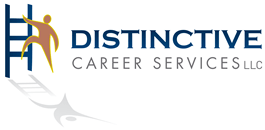
Time. It is a finite resource that most of us wish there were more of.
Even if your deepest wish is to advance your career, for most of us, it never feels like we have enough hours in the day. We get so busy with the chaos of daily life in the modern world: attending to the needs of children, spouses, and aging parents; spending 8, 10, 12 hours each day working and commuting; grocery shopping and preparing meals; doing household chores. It can be exhausting.
Do you have personal and professional goals that keep getting pushed to the wayside? When you’re spinning your wheels in this way just getting through the average day, even the thought of making enough time to work on your career seems impossible.
But be honest with yourself – even if you had more hours would you use them to work on tasks that will advance your career? Or, would you just waste them away? How many times have you asked yourself, “Where did the day go”? While you might not have said those exact words, chances are you’ve felt that way more times than you’d like to remember.
This is a sure sign that we aren’t making the most of the time that we have. Maybe it is really only 5, 10, or 15 minutes, but if we can reclaim that lost time, we CAN make progress toward our career goals.
Here then, are 101 career-advancing things you can choose from to do today in just 15 minutes or less. Keep this list handy to refer to whenever you have a few minutes free, pick one action item, and maintain forward momentum toward your career goals no matter how busy your life is.
Where Are You Now?
Find the most recent version of your resume and locate your current job description to help you update your resume.
Google yourself. What comes up when you put your name in Google? How might this have a positive or negative impact on your career?
Brainstorm a list of everything you need to add to your resume: recent work experience and accomplishments, education, training, certifications or licenses, etc.
Research and make a list of the most effective keywords that should be in your resume and LinkedIn profile.
Identify and review your most recent performance evaluation or annual review. What were you commended for?
Make a list of new skills and education you’ve achieved. Have you attended any conferences? Achieved a certification? Also consider non-traditional education/training. Assemble a list of relevant online courses, boot camps, and tutorials you’ve completed.
Make a list of the honors and/or awards you’ve received.
Review your social media profiles. Do they position you in the best light as a jobseeker? If not, scrub negative information. Delete any profiles you’re no longer using.
Take some time to consider whether you want to pursue a new job or a new career. Use the Decision Quadrant to evaluate each possibility.
Discover what you do best by taking a skills assessment, like the Clifton StrengthsFinder or DISC profile.
Research compensation. Find out how much your skills are worth. That way you’ll have the facts you need for salary discussions.
Develop a list of everyone you know who is or should be a part of your personal and professional network. Focus on personal contacts such as friends, relatives, parents of your children’s friends, neighbors, friends from church, members of community groups, people you meet while volunteering, fellow health club members, etc.
Develop a list of everyone you know who is or should be a part of your personal and professional network. Focus on business contacts such as co-workers and previous co-workers, vendors, suppliers, past bosses, competitors, customers, people you know from professional associations and conferences, etc.)
Develop a list of everyone you know who is or should be a part of your personal and professional network. Focus on third-party contacts such as accountants, doctors, real estate brokers, financial advisors, bankers, attorneys, dentists, mortgage bankers and brokers, clergy or ministers, insurance agents, travel agents, angel investors, venture capitalists, etc.
Develop a list of everyone you know who is or should be a part of your personal and professional network. Focus on educational contacts such as elementary, middle, and high school friends and teachers, college classmates and friends, alumni association contacts, fraternity/sorority members, graduate school classmates, other alumni of your schools, university career-placement office staff, and former professors and advisors, etc.
Prioritize the list of people in your personal and professional network. Who are the top 10, 25, and 50 people you should contact first?
Prepare & Plan For the Future
Why do you want to make a change? Take 15 minutes and sit down and make a list of the things you do and do not like about your current job/career.
Instead of asking yourself, “What do I want to be when I grow up,” sit down and take a few minutes to ask yourself the question, “What problem(s) do I want to solve?”
Brainstorm what are the 10 most likely job titles for the position you want.
Research and identify three job postings for the type of position you’d like (even if these aren’t job postings you actually end up applying for).
Spend some time thinking about your dream job. Make a list of the types of things you’d be doing each day if you were working your dream job.
Think about what you would want your next job to do for you that your current job doesn’t. In other words, make a list of what will be different about your next job.
Set up an informational interview with someone who is working in the industry that interests you or is working in the profession you are most interested in.
Prepare for your informational interview. Familiarize yourself with the person you’re meeting with, their job, the company, and the industry. You don’t want to waste someone’s time by asking them a question that could have been answered with a Google search.
Assess whether you have the skills, experience, and/or qualifications necessary for the job or career you want to pursue.
Don’t just look for a job — look for a calling. Spend 15 minutes answering these three questions: What are you meant to do? How can you use your skills, education, and experience for maximum benefit? What kinds of problems could you solve for a company?
Take a few minutes to organize your job search. Go through this list and create a weekly plan of activities you’ll engage in.
Identify the skills, training, and/or education you need for success in your next job or career. Research how to obtain one of these.
Take a personality assessment (like the Holland Self-Directed Search, the Keirsey Temperament Sorter, or the Myers-Briggs Type Indicator) to figure out what type of work you’re best suited for.
Set up a Google Alert for your name, so you can see when information is posted online about you.
List your preferences for the type of organization you’d like to work for. Then create a target list of companies that fit your criteria.
Research your target job salary.
Identify the tools you will need for your job search. Make a list of things you need, or need to update, like your resume and LinkedIn profile.
Think about how you got your last job. Spend a few minutes identifying how you got your most recent job. (For example, were you networking at a professional association meeting?) Is that something you can try again?
Clean up your inbox. Weed out the clutter so you can stay on top of your new activities. Unsubscribe from newsletters you rarely read and combine your favorite subscriptions.
Update your look. When was the last time you tried a new hairstyle? Book an appointment.
Set a goal for how many professional events you want to attend in the coming month or over the next year. Show up with an agenda for what you’re looking to accomplish, whether it’s meeting new networking contacts or learning more about your industry.
Check your credit report before you begin applying for jobs — especially for jobs in finance and banking. Recognize that you can refuse access to your credit report but know that doing so may disqualify you from being considered for the position.
Join a professional association. Membership has its benefits including networking and educational opportunities.
Follow industry news. Impress others with your knowledge. Spend a few minutes between meetings scanning the top business blogs in your industry. Bonus points if you share interesting articles on your LinkedIn profile.
Audit your social media presence. Delete unprofessional photos and posts from Facebook, Twitter, Instagram and other platforms you are active on.
Research if there are any gaps in your social media presence — are there websites that are standard for your industry that you should be on (for example, an Instagram account if you’re a photographer)?
Read a book that will motivate and inspire you.
For your career goals, examine job postings for your dream job and identify any deficiencies in your skills, education, and experience that you need to work on. Be as specific as you can.
Double-check and optimize your security and privacy settings on all your social media accounts.
Set up a system to track your progress. Try different tools, such as calendars, journals, or logs to keep track of your career goals and see which system works best for you.
Review your company employee handbook and/or your employment agreement so you know what you’re entitled to if you leave the company. Make sure you’re not leaving money on the table by quitting at the wrong time.
Slowly begin to increase your LinkedIn connections — make a goal of adding one new contact each day.
Set career goals for yourself. Where do you want to be 1 year, 3 years, and 5 years from now? What do you need to do to get there?
Write down what kind of support you need — personally and professionally — to reach the goals you’ve set for yourself.
Identify & Promote Your Value Offering
What value would you bring to your next employer? Can you help the company make money? Save money or save time? Make work easier, or solve a specific problem? Expand their business and attract or retain customers? Identify what you can do in each of these areas.
Outline one of your success stories using the C-A-R strategy. (What was the Challenge? What Actions did you take? What Results did you achieve?)
Outline another of your success stories using the C-A-R strategy. (What was the Challenge? What Actions did you take? What Results did you achieve?) Continue doing this with all of your accomplishments.
Rehearse telling your success stories verbally.
Prepare yourself to answer the question, “Tell me about yourself.”
Write down the story of your biggest professional accomplishment of the past year.
Prepare to answer questions about gaps in your employment, skills you don’t have that are necessary for the job/career you want, and why you left a job. Take some time to think through how you’d answer questions about these issues.
Pull together information for your brag book — a copy of your college or university transcript and certificates/diplomas, work samples, copies of awards or honors, testimonials about your work from supervisors and/or customers, etc.
Reach out to enlist the help of a professional resume writer like Distinctive Career Services for help updating your resume and LinkedIn profile.
Rehearse your elevator pitch. Introduce yourself in a way that makes others eager to learn more. Come up with a memorable statement about what you do and who you do it for.
Take an inventory. Take a good look at yourself. Write out your strengths and weaknesses. Identify your passions. Think about what you’re good at and what you like to do.
Distinguish yourself from your colleagues. There are plenty of talented and dependable people in every field. Pinpoint your unique selling point.
Ask for feedback. Survey your family, friends, customers and colleagues to find out what they think of you and your abilities. Show your appreciation for constructive criticism so they’ll keep sharing it with you.
To stand out in a crowded job search, you have to develop your personal brand. Answer the question for employers: “Why should we hire you?” Your personal brand must express the answer, showing you are unique and original and able to solve the company’s problem.
- To develop your personal positioning, answer these four questions: What is the company’s need? What are your core abilities? What are your values? What is your connection to the company’s need?
Research your profession to identify your positioning. What skills, attributes, and experience are particularly important within your career area?
Make a list of words and phrases — things you have worked with, things you’ve accomplished, specific training you’ve received, projects you’ve worked on, and life experience that would be valuable. Are there any common threads or themes?
Read your performance reviews. What do other people say about you?
Supercharge Your Career (Land Your Next Job or Promotion!)
Brainstorm a specific list of steps to take to execute your game plan. Ask someone to be your accountability partner to help you on your path to achieve your goal.
Make sure you’ve obtained permission from each one of your references to list him or her as a reference for you! The number one reason for a poor reference is that your reference wasn’t prepared for the inquiry!
Post a new headshot on LinkedIn. Photographs are often the first thing visitors notice about your profile.
For consistency, consider changing your profile photos on all of your social media accounts to the same (professional) photo so it makes it clear that the hiring manager found the right person!
Research one of the companies that you’re interested in. Look at their website. Do a Google search on them.
Follow all the companies that interest you on LinkedIn so you get updates about their activities in your news feed.
Go through your network and contact anyone you know (or a friend-of-a-friend) who works for each of the companies on your target company list.
Reach out to one person in your network and let them know you are looking for a new opportunity.
Identify a hiring manager at one of your target companies, and see if you can find someone in your network who knows him or her and can make an introduction to that person.
- Look for opportunities to connect with a hiring manager before you send your resume and cover letter. Who do you know in common? Did you both graduate from the same university? Have kids that attend the same grade school?
Research recruiters who work in your target industry and send 3-5 of them a LinkedIn connection request.
Apply for an advertised opening for a job you’re interested in.
Customize your resume for a position you are applying for. Include relevant keywords.
Double your chances of reaching the hiring manager by sending your resume and a customized cover letter by email and snail-mail. Don’t skip the step of mailing a hard copy. It will help you stand out!
Research Applicant Tracking Systems (ATS) and best practices for ATS-compliant resumes. Make sure your resume is ATS friendly.
Make a phone call to follow up on an application. You likely will have to leave a voice mail message if you don’t reach the hiring manager directly, so be prepared with what you want to say!
Join a LinkedIn group. Extend your network by participating in a group related to your field. Post a question or share your expertise.
Follow someone on Twitter. Reach out to a thought leader or follow up with a colleague you sat next to at a fundraiser last week. Re-tweet some of their posts.
Set up job alerts on LinkedIn.
Reach out to someone who works for the company you want to work for, or in the industry you want to work for. Ask them if they will meet you for lunch or dinner.
Find an accountability partner. Who can you work with to support you during your job search? Maybe it’s enlisting your spouse, or a friend. Or maybe it’s hiring a career coach. Line that person up.
Support others. Networking is more effective and rewarding when you focus on giving to others. Take a few minutes to retweet someone’s message or recommend a former intern on LinkedIn.
Demonstrate initiative in your current job. Identify what your boss considers to be the top business priorities so you know where to devote your efforts. Find a way to contribute that goes above and beyond your job description.
Express gratitude. Take 5 minutes to let your colleagues know how much you appreciate them. Offer sincere praise and share credit for team projects. They’ll be more likely to return the favor.
Ask for help. Sometimes you might fail simply because you don’t ask for help and try to do everything by yourself. Perhaps a little help will bring you success! Ask for help when you need it.
Review your professional goals. Sometimes they need to be modified or changed. You don’t have to stick with outdated goals that no longer serve your vision of the future.
Increase your visibility and post fresh content on LinkedIn.
Prepare to answer the question, “Why did you leave your last job?” or “Why are you interested in leaving your current position?”
Think of a positive way to frame your reason for leaving a company, even if it was negative. Instead of “My boss didn’t provide me with clear expectations of what he wanted,” consider “I didn’t have a clear understanding of expectations for my job performance, and I know now that is what I need to be successful.”
Send a thank you note to someone who has helped you in your career or job search.
Determine a way to compare job offers against one another — using a plus/minus system, ranking criteria, or a simple comparison of facts.
Practice for phone and virtual interviews. Don’t just practice answering questions — also practice how you will sound on the phone or look on webcam. Conduct a mock interview with a friend and record it.









